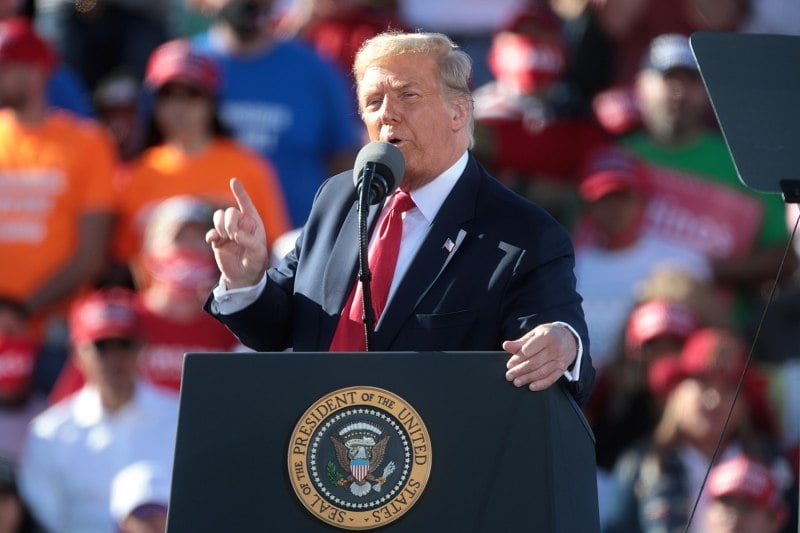Stanford economists modeled President Trump’s rallies as superspreading events, estimating that 30,000 people contracted COVID-19 following the gatherings in a study released last week. Researchers said 18 of Trump’s September rallies alone have racked up a death toll of 700 people.
“Communities in which Trump rallies took place paid a high price in terms of disease and death,” the researchers concluded.
Although the study hasn’t finished the peer-review process, the preprint quickly made national headlines. Former President Obama, national newspapers and “Saturday Night Live” have all featured the study this past week.
White House spokesman Judd Deere dismissed the study as “a politically driven model based on flawed assumptions,” saying it was “meant to shame Trump supporters” in a statement to The New York Times earlier this week.
The Stanford researchers behind the study say they exercised scholarly precaution, using established methods of data analysis to reach their conclusions. Study lead and economics department chair B. Douglas Bernheim launched the study after he saw an avenue to bring in an “economist’s perspective” to the debate over reopening.
“I’m an economist who studies well-being first and foremost. I’m really not a political animal,” Bernheim told The Daily. “I’ve been asked by every administration from Reagan onwards to be involved with the federal government, and I’ve turned it down everytime.”
Bernheim said that while could have applied his research methodology to any large gathering, he studied Trump’s rallies because they were “the perfect scientific experiment.”
“The thing about Trump rallies is that they check all the boxes,” he said, referring to conditions that enable statistical analysis of COVID-19. “They are temporally isolated, they are geographically isolated, they are completely cataloged, and there are a number of instances.”
To arrive at their estimate of 30,000 infections and 700 deaths, the team turned to a three-pronged economic methodology: running a regression to identify the best COVID-19 predictors, comparing each Trump rally city with over 100 similar sister cities and verifying that their model would correctly dismiss placebo events.
Economics professor Guido Imbens vouched for the paper’s econometric methods.
“The methodology is sound — it is state-of-the-art in a very active literature,” Imbens said. “The placebo analyses that show no effects prior to the rallies in the same counties is very convincing and adds a lot to the study. As a researcher intimately familiar with these methods, the evidence is quite striking.”
Trump’s rallies hold superspreading potential, according to the researchers, who cite instances like the Sturgis Motorcycle Rally, which has been linked to 260,000 COVID-19 cases. The rally drew a crowd estimated at nearly 500,000 people this August.
Alexander Becker, a biology postdoc who studies superspreading, explained earlier this year how the phenomenon plays a role in COVID-19 outbreaks: “It’s estimated that 10-20% of infected people account for 80% of SARS-CoV-2 transmissions,” Becker said. “By limiting the sizing of indoor gatherings, we make it impossible for superspreading to infect dozens of people in a 24 hour sitting.”
Even when gatherings are outdoors, biology professor Erin Mordecai said that close contact carries a number of risks.
“By all accounts, Trump rallies group large numbers of people close together, without requiring people to wear masks and with lots of yelling, chanting, and other activities we know elevate the risk of transmission,” she said.
She contrasted the cautious reopening of schools with the Trump rallies described in the study, pointing out that many schools — examples of large gatherings — remain virtual to reduce transmission, “despite the potentially harmful side-effects these changes can have on children.”
“Professor Bernheim’s research is helpful as a way of evaluating the public health consequences and weighing our societal priorities about how we protect vulnerable members of society,” she said.
Contact Yash Dalmia at yashdalmia ‘at’ stanford.edu.
